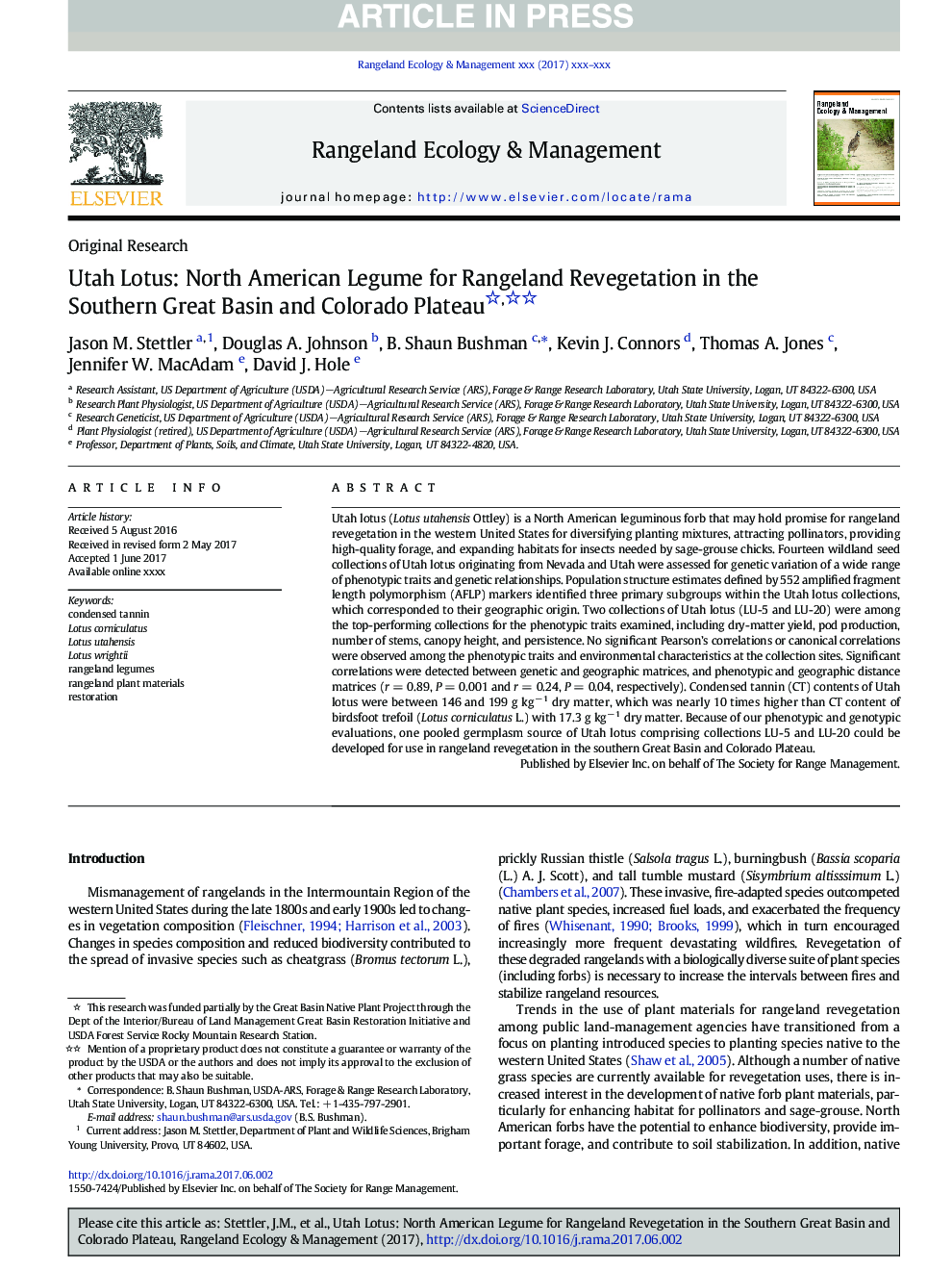| Article ID | Journal | Published Year | Pages | File Type |
|---|---|---|---|---|
| 5745182 | Rangeland Ecology & Management | 2017 | 9 Pages |
Abstract
Utah lotus (Lotus utahensis Ottley) is a North American leguminous forb that may hold promise for rangeland revegetation in the western United States for diversifying planting mixtures, attracting pollinators, providing high-quality forage, and expanding habitats for insects needed by sage-grouse chicks. Fourteen wildland seed collections of Utah lotus originating from Nevada and Utah were assessed for genetic variation of a wide range of phenotypic traits and genetic relationships. Population structure estimates defined by 552 amplified fragment length polymorphism (AFLP) markers identified three primary subgroups within the Utah lotus collections, which corresponded to their geographic origin. Two collections of Utah lotus (LU-5 and LU-20) were among the top-performing collections for the phenotypic traits examined, including dry-matter yield, pod production, number of stems, canopy height, and persistence. No significant Pearson's correlations or canonical correlations were observed among the phenotypic traits and environmental characteristics at the collection sites. Significant correlations were detected between genetic and geographic matrices, and phenotypic and geographic distance matrices (r = 0.89, P = 0.001 and r = 0.24, P = 0.04, respectively). Condensed tannin (CT) contents of Utah lotus were between 146 and 199 g kgâ 1 dry matter, which was nearly 10 times higher than CT content of birdsfoot trefoil (Lotus corniculatus L.) with 17.3 g kgâ 1 dry matter. Because of our phenotypic and genotypic evaluations, one pooled germplasm source of Utah lotus comprising collections LU-5 and LU-20 could be developed for use in rangeland revegetation in the southern Great Basin and Colorado Plateau.
Related Topics
Life Sciences
Agricultural and Biological Sciences
Agricultural and Biological Sciences (General)
Authors
Jason M. Stettler, Douglas A. Johnson, B. Shaun Bushman, Kevin J. Connors, Thomas A. Jones, Jennifer W. MacAdam, David J. Hole,
